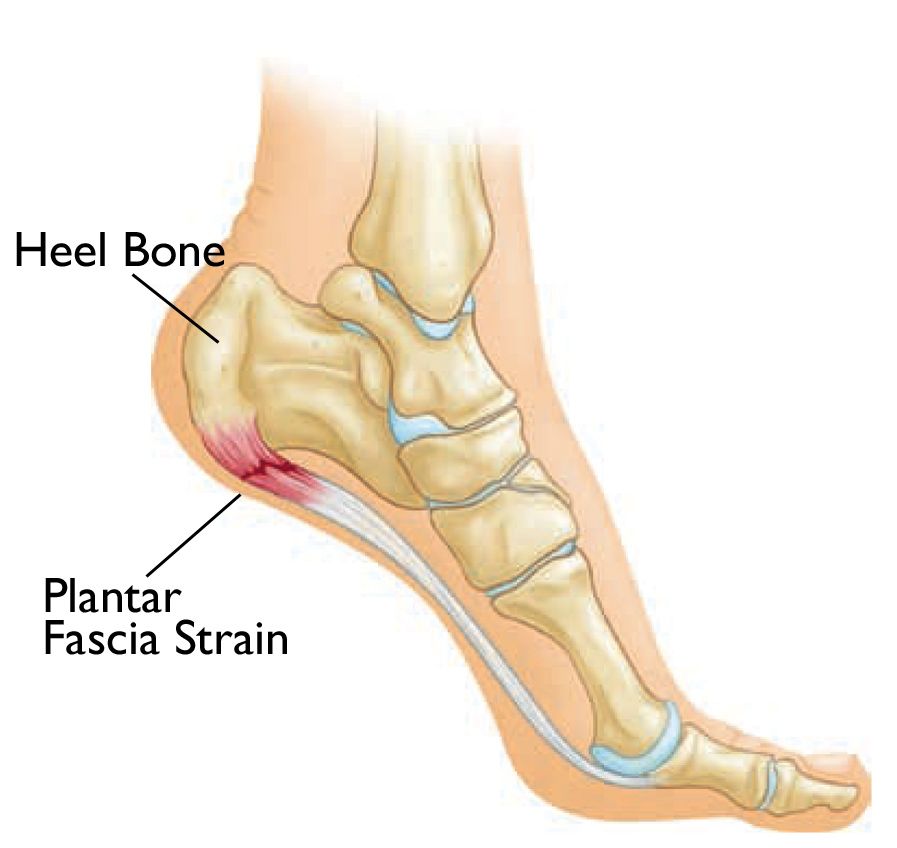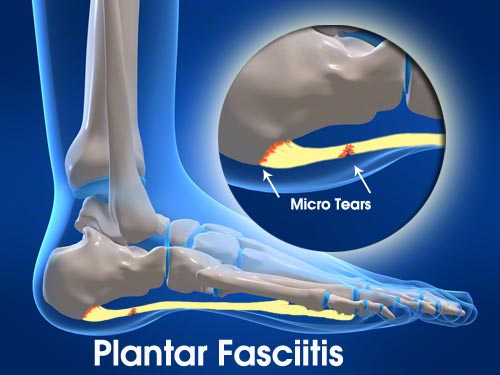Plantar fasciitis affects nearly 1 in 10 people and can last for years if not treated properly. I detailed what exactly plantar fasciitis is.
 Plantar fasciitis is one of the most prevalent injuries in existence, affecting 1 in 10 people over the course of their lifetimes and accounting for upwards of 15% of all foot pain conditions presented to medical providers (1-6). It’s even more common in athletes such as runners, basketball players, or soccer players (7-9). It’s a serious pain in the…foo To give you more information on what plantar fasciitis is, how to know if you have it, and how to alleviate it, I’m writing this three part series on it. Welcome to part one.
What is plantar fasciitis?
Plantar fasciitis is one of the most prevalent injuries in existence, affecting 1 in 10 people over the course of their lifetimes and accounting for upwards of 15% of all foot pain conditions presented to medical providers (1-6). It’s even more common in athletes such as runners, basketball players, or soccer players (7-9). It’s a serious pain in the…foo To give you more information on what plantar fasciitis is, how to know if you have it, and how to alleviate it, I’m writing this three part series on it. Welcome to part one.
What is plantar fasciitis?Plantar fasciitis refers to irritation of a connective tissue on the bottom of the foot known as the plantar fascia, that runs from the calcaneus (heel) to each of the five toes. It has lateral (outer), central, and medial (inner) slips, each of which have a superficial and deeper layer.

The plantar fascia plays a critical role in the foot, including stability and efficiency of movement. The plantar fascia helps stabilize the arch of the foot and further, whenever you come onto the ball of your foot- whether that’s during walking, running, jumping, etc – the plantar fascia tightens through what’s known as the Windlass mechanism to stabilize the entire foot and arch, leading to efficient forward propulsion of the foot.

Additionally, the plantar fascia takes stress off numerous other foot muscles and puts the foot in a better position so those muscles can do their job more easily. It’s for this reason why individuals suffering from plantar fasciitis may begin to have discomfort and pain in multiple other muscles – they’re now overstressed and overworked. It’s a vicious cycle.
What’s happening to the plantar fascia tissue?
So the term “fasciitis” is actually a misnomer. The suffix “-itis” means inflammation but studies are increasingly showing relatively minimal inflammation in an injured plantar fascia (10,11). Rather, what seems to be happening is that small micro-tears are forming in he fascia which leads to subsequent tears and disorganization in the fascia tissue.
To that point, the injury is being reframed as “plantar fasciopathy”, with -pathy meaning pathology of the tissue rather than inflammation. That’s similar to other overuse, over-stress injuries like achilles tendinopathy.
This newfound understanding of the injury is informing how we treat it and alleviate it. However, before that, it’s important to know that you’re actually dealing with plantar fasciopathy rather than some other injury because not all heel or arch pain is plantar fasciopathy. I’ll take you through that next time.
Thanks for reading and always remember that health and performance are two sides of the same coin.
Sources:
1. Tahririan MA, Motififard M, Tahmasebi MN, Siavashi B. Plantar fasciitis. J Res Med Sci. 2012;17(8):799-804. http://www.ncbi.nlm.nih.gov/pubmed/23798950.
2. Liden B, Simmons M, Landsman AS. A retrospective analysis of 22 patients treated with percutaneous radiofrequency nerve ablation for prolonged moderate to severe heel pain associated with plantar fasciitis. J Foot Ankle Surg. 48(6):642-647. doi:10.1053/j.jfas.2009.05.013.
3. Singh D, Angel J, Bentley G, Trevino SG. Fortnightly review. Plantar fasciitis. BMJ. 1997;315(7101):172-175. doi:10.1136/bmj.315.7101.172.
4. Pfeffer G, Bacchetti P, Deland J, et al. Comparison of custom and prefabricated orthoses in the initial treatment of proximal plantar fasciitis. Foot ankle Int. 1999;20(4):214-221. doi:10.1177/107110079902000402.
5. Cole C, Seto C, Gazewood J. Plantar fasciitis: evidence-based review of diagnosis and therapy. Am Fam Physician. 2005;72(11):2237-2242. http://www.ncbi.nlm.nih.gov/pubmed/16342847.
6. Riddle DL, Pulisic M, Pidcoe P, Johnson RE. Risk factors for Plantar fasciitis: a matched case-control study. J Bone Joint Surg Am. 2003;85-A(5):872-877. http://www.ncbi.nlm.nih.gov/pubmed/12728038.
7. Petraglia F, Ramazzina I, Costantino C. Plantar fasciitis in athletes: diagnostic and treatment strategies. A systematic review. Muscles Ligaments Tendons J. 7(1):107-118. doi:10.11138/mltj/2017.7.1.107.
8. Orchard J. Plantar fasciitis. BMJ. 2012;345:e6603. doi:10.1136/bmj.e6603.
9. Taunton JE, Ryan MB, Clement DB, McKenzie DC, Lloyd-Smith DR, Zumbo BD. A retrospective case-control analysis of 2002 running injuries. Br J Sports Med. 2002;36(2):95-101. doi:10.1136/bjsm.36.2.95.
10. Monteagudo M, de Albornoz PM, Gutierrez B, Tabuenca J, Álvarez I. Plantar fasciopathy: A current concepts review. EFORT open Rev. 2018;3(8):485-493. doi:10.1302/2058-5241.3.170080.
11. Lemont H, Ammirati KM, Usen N. Plantar fasciitis: a degenerative process (fasciosis) without inflammation. J Am Podiatr Med Assoc. 93(3):234-237. http://www.ncbi.nlm.nih.gov/pubmed/12756315.